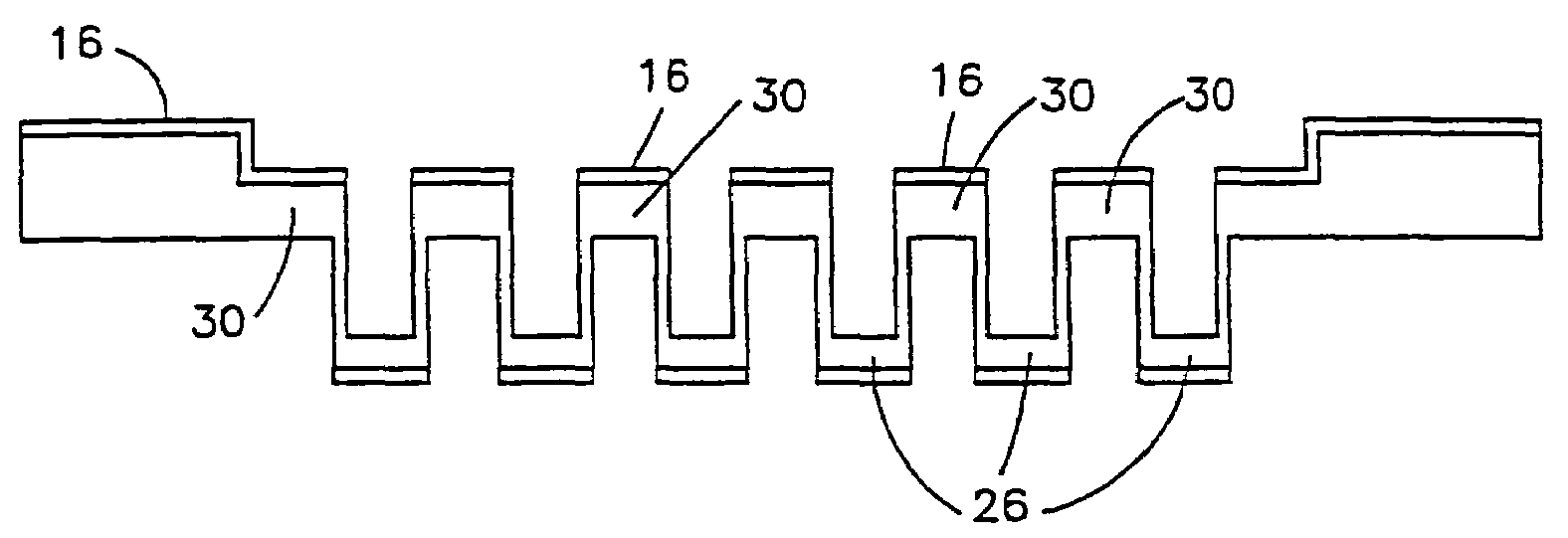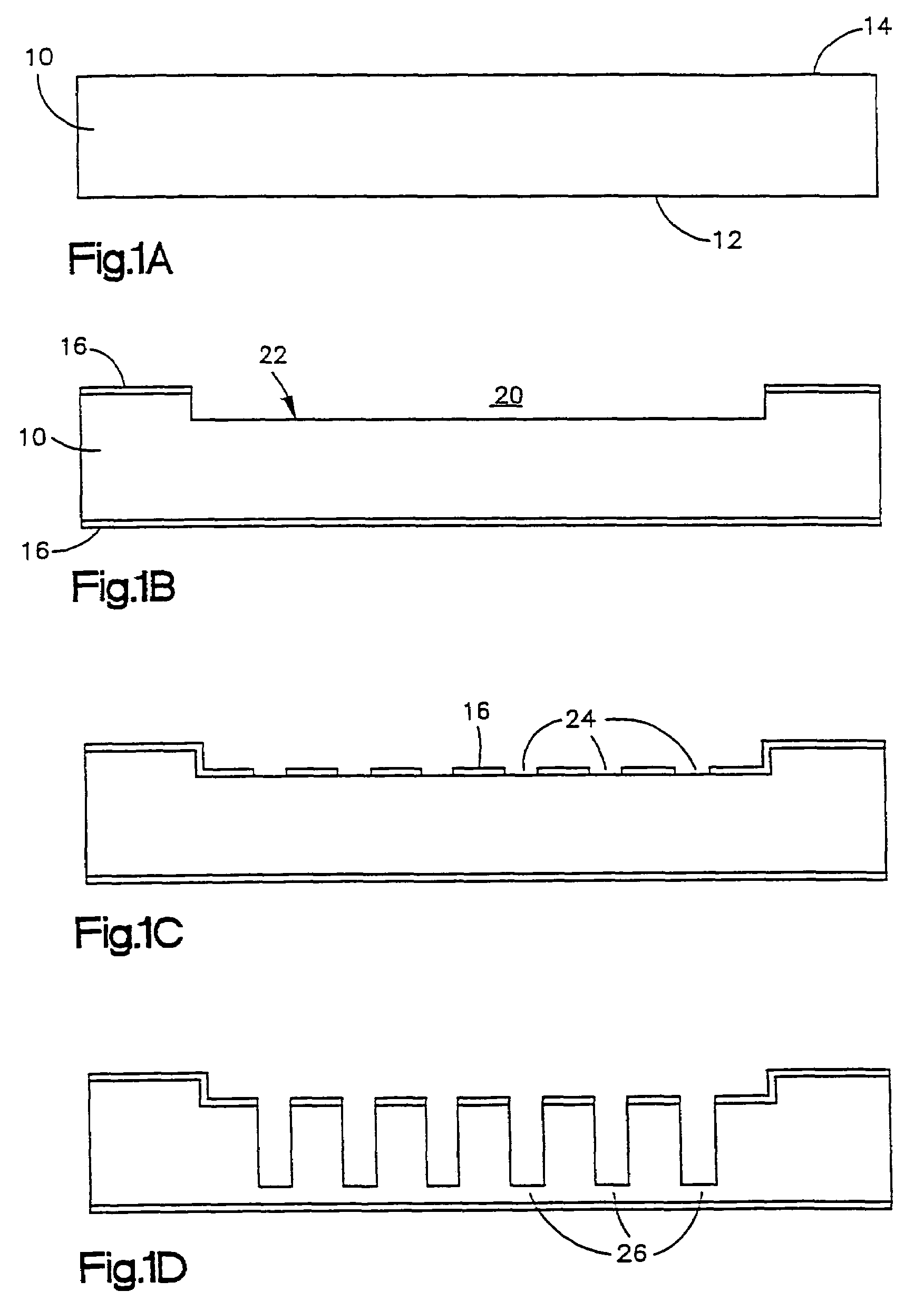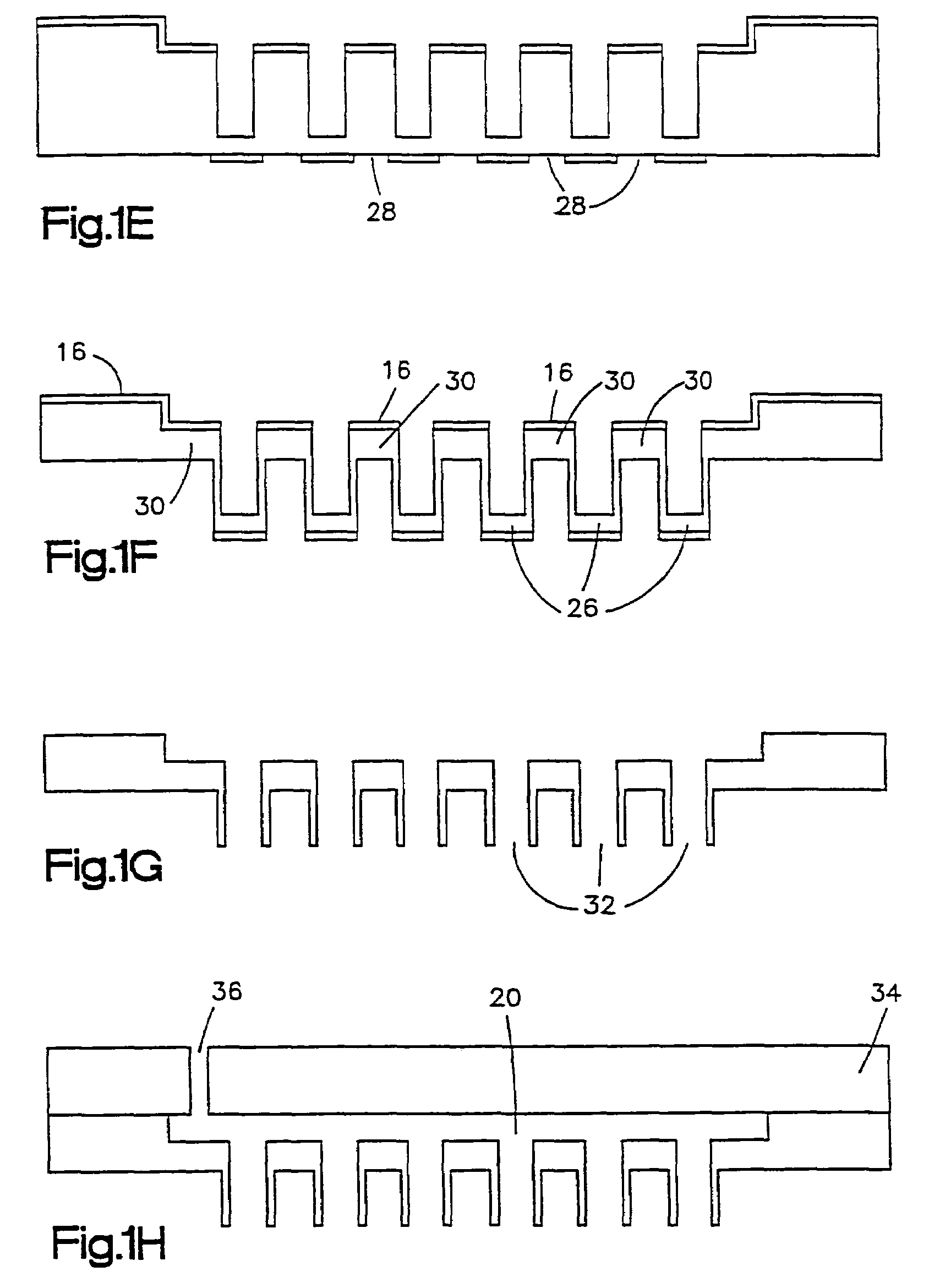Microneedle array module and method of fabricating the same
a technology of microneedle array and microneedle, which is applied in the direction of locomotives, transportation and packaging, paper/cardboard articles, etc., can solve the problems of drug not being absorbed very effectively by the vessel wall, process poses serious problems, and adverse medical effects on parts of the body
- Summary
- Abstract
- Description
- Claims
- Application Information
AI Technical Summary
Problems solved by technology
Method used
Image
Examples
Embodiment Construction
[0012]FIG. 1A-1H and FIGS. 2A-2G are illustrations of two exemplary methods of fabricating a microneedle array module. FIGS. 1G and 2F depict cross-sectional views of alternative embodiments of microneedle array structures having microneedles cylindrical in shape and conical in shape, respectively. The structures of FIGS. 1G and 2F result from their respective fabrication methods. FIGS. 3A and 3B depict two three-dimensional perspectives of the exemplary resulting microneedle array module shown in the cross-sectional view of FIG. 2F. FIGS. 1H and 2G provide cross sectional views of further embodiments of the array structure in which a reservoir well thereof is covered as will become better understood from the description found herein below.
[0013]In FIG. 1A is shown a substrate 10 having a front surface 12 and back surface 14. The substrate 10 may be comprised of Silicon or a glass material, or a form of SiO2, like pyrex, for example, and be on the order of four hundred micrometers (...
PUM
| Property | Measurement | Unit |
|---|---|---|
| thick | aaaaa | aaaaa |
| diameter | aaaaa | aaaaa |
| thick | aaaaa | aaaaa |
Abstract
Description
Claims
Application Information
 Login to View More
Login to View More - R&D
- Intellectual Property
- Life Sciences
- Materials
- Tech Scout
- Unparalleled Data Quality
- Higher Quality Content
- 60% Fewer Hallucinations
Browse by: Latest US Patents, China's latest patents, Technical Efficacy Thesaurus, Application Domain, Technology Topic, Popular Technical Reports.
© 2025 PatSnap. All rights reserved.Legal|Privacy policy|Modern Slavery Act Transparency Statement|Sitemap|About US| Contact US: help@patsnap.com



